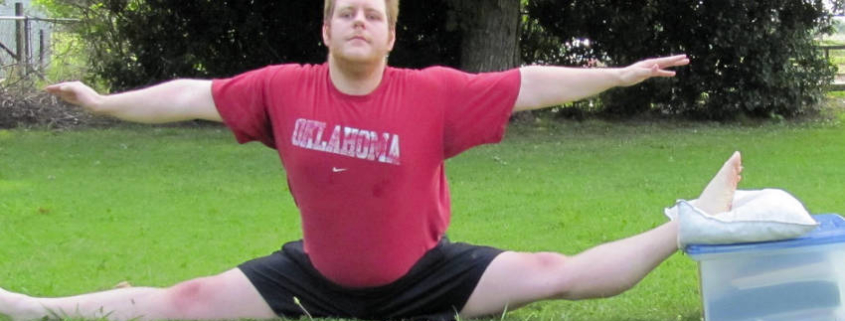Dangers of Over Stretching
“Stretching may increase your flexibility, but you will most likely be weaker and the results are often short-lived. In 2004, a report published by the American College of Sports Medicine (ACSM) questioned the efficacy of stretching; noting that more than 350 studies conducted over four decades had failed to establish that stretching prior to activity prevents injury.”
When you stretch, you take your muscle to the point where you can feel a slight pull and hold this position for a few seconds without pain or discomfort. However, if you stretch your muscles beyond their normal range of motion, you may experience a pulled muscle -or muscle strain. This is overstretching.
A common problem is when exercise enthusiasts stretch while the muscle is still cold. By trying to lengthen muscles in a tightened state, there is a risk of causing “micro” tears. If you experience delayed pain in your muscle that occurs about one to two days after your stretching, the pain is most likely caused by tiny tears in the muscle. Symptoms of a pulled muscle depend upon on the site and severity of your injury. Symptoms may include pain, swelling, muscle spasms and the limited ability to move the affected muscle, including weight bearing/walking if the affected muscle is in your leg. Strains most commonly occur in the lower back, hamstrings and inner thigh. However, pulled muscles can occur virtually anywhere in your body that muscles and tendons are located.
Damaging a muscle through any means, including overstretching, will have an adverse effect on our ability to move. The loss of efficient movement puts stress on virtually all other structures — ligaments, tendons, joints and bones, in addition to many muscles. The body tries to compensate for this irregular movement, and in doing so uses up more energy, effects athletic performance and increases the risk of injury.
A study, conducted by J. Cramer and colleagues from the Department of Kinesiology at the University of Texas, compared changes in muscles that were stretched and not stretched in the same person. It concluded that stretching one muscle can also impair another muscle that was not stretched, possibly through a neurological inhibitory mechanism. Other studies demonstrated adverse effects on lower limb power, sprinting ability, vertical jump and aerobic endurance training.
So what causes muscle imbalances and the feeling of tight muscles and the need to stretch? Well, muscle imbalances occur for many reasons. Many people have poor posture and faulty movement patterns which sets up inhibitory neurological signals within the body. This leads to muscle imbalance and fascial adhesions which further inhibit normal movement and can cause chronic pain and dysfunction.
When muscles aren’t used normally as nature intended, they eventually shorten and the related joints become less mobile, decreasing your range of motion. This is referred to as inflexibility. Observation of animals and how they use their whole body with each movement which helps them retain their strength, flexibility and health is interesting to note. So essentially, if you are moving well (as nature intended) throughout the day you are always stretching to some degree and keeping your body in balance.
If you have a muscle pull or tear, from overstretching you should discontinue exercise and begin osteopathic treatment. Osteopaths will assess and treat musculoskeletal pain and dysfunction and try and establish the root cause for any flexibility issues. Osteopaths may suggest exercise that helps reestablished natural movement patterns to help balancing areas of dysfunction and poor flexibility.
An effective warm-up should include a few controlled compound movements done through full range of motion. These movement drills help lubricate joints, increase muscle temperature and established healthy movement patterns. Then, consider why you need to stretch, then perform slow and gentle stretches instead of quick stretches. There are always exceptions to every rule ie with gymnasts and dancers. The static stretching for these individuals should still be handled very carefully to avoid injury.
View a list of common complains that Osteopathy can assist with
Discovery the benefits of Osteopathy
- What is Osteopathy?
- Adult health issues
- Babies and Children
- During and after pregnancy
- Common Complaints
- Testimonials
- Sports Injuries
- Genral Osteopathy FAQs
- The Science & Reasearch



